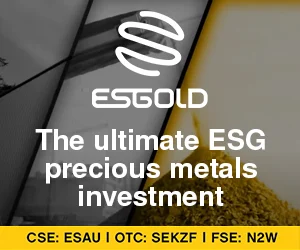Platinum, often overshadowed by its more famous counterparts gold and silver, is the third most traded precious metal in the world. Its unique properties and diverse applications have led to a growing investment demand, making it an intriguing option for investors looking to diversify their portfolios. This article delves into the characteristics of platinum, its supply and demand dynamics, and various investment avenues available for those interested in this precious metal.
What is Platinum?
Platinum is a silvery-white precious metal known for its softness and ductility. It boasts remarkable durability and excellent catalytic properties, including a high melting point and resistance to corrosion and simple acids. With the symbol Pt on the periodic table, platinum is the most abundant and widely used of the platinum-group metals (PGMs), which also include palladium, rhodium, and iridium.
Unlike many metals, platinum is rarely mined in isolation. Instead, it is typically extracted alongside palladium and other PGMs from nickel and copper ores or chromitite deposits. This unique extraction process contributes to its value and availability in the market.
Platinum Demand Trends
The demand for platinum is driven by its diverse applications across various sectors. According to the World Platinum Investment Council (WPIC), total platinum demand for 2024 is projected to be 7.95 million ounces, maintaining levels similar to the previous year. The four primary sectors driving this demand are:
Automotive (40%): Platinum is predominantly used in catalytic converters, essential for controlling vehicle emissions. While palladium has been favored for gasoline engines, platinum is preferred for diesel engines. Recent trends indicate a shift towards substituting platinum for palladium in gasoline vehicles due to the latter’s high prices. The rise of electric vehicles (EVs), which do not require catalytic converters, poses challenges for platinum demand; however, the current slowdown in EV sales has somewhat mitigated this impact.
Industrial (31%): Platinum finds applications in various industrial processes, including glass manufacturing, electronics, and fertilizers. However, demand from this sector is expected to decline due to a slowdown in chemical plant start-ups, particularly in China.
Jewelry (25%): The global jewelry market is projected to grow, particularly in regions like India and the United States, where platinum is becoming a more affordable alternative to gold.
Investment (5%): Investment demand for platinum is expected to experience fluctuations, with a slight decline in 2024 followed by a rebound in 2025, driven by strong inflows into platinum exchange-traded funds (ETFs) and new product launches.
Additionally, the emerging hydrogen economy is creating new demand for platinum, particularly in hydrogen fuel cells and electrolyzers, which could become significant contributors to platinum demand by 2040.
Platinum Supply Trends
The supply dynamics of platinum are equally compelling. The WPIC estimates that the platinum market will face a supply deficit for the third consecutive year in 2025, with a shortfall of approximately 539,000 ounces. This deficit is narrowing compared to previous years, thanks to a 14% increase in recycling production, which is offsetting a 2% decline in mine output.
South Africa remains the dominant player in platinum production, accounting for about 67% of global output. However, ongoing electricity shortages and transport disruptions have hampered production in recent years. Other notable platinum-producing countries include Russia, Zimbabwe, Canada, and the United States.
How to Invest in Platinum
For investors looking to capitalize on the potential growth of platinum, several investment avenues are available:
1. Platinum Mining Stocks
Investing in shares of platinum-mining companies can provide exposure to the metal’s price movements. Major players in the industry include:
Anglo American Platinum: A leading producer with significant operations in South Africa.
Impala Platinum Holdings: A prominent producer with operations in South Africa, Zimbabwe, and Canada.
Sibanye Stillwater: One of the largest primary platinum producers, also engaged in recycling.
2. Physical Platinum Bars and Coins
Investors can purchase physical platinum through bullion dealers. Options include platinum bars and coins, which can be acquired from various retailers, including Costco in the U.S. This method allows investors to hold the metal directly.
3. Platinum ETFs
Exchange-traded funds (ETFs) offer a way to invest in platinum without the need to physically hold the metal. Notable ETFs include:
Aberdeen Physical Platinum Shares ETF: Reflects the performance of physical platinum.
Sprott Physical Platinum and Palladium Trust: Provides access to the physical platinum market while allowing for trading flexibility.
4. Platinum Futures
For more experienced investors, platinum futures contracts offer a way to speculate on the price movements of platinum. These contracts are traded on exchanges like the New York Mercantile Exchange (NYMEX) and involve agreements to buy or sell platinum at a predetermined price in the future.
Conclusion
Platinum’s unique properties and diverse applications make it an increasingly attractive investment option. With a strong long-term outlook driven by demand from the automotive, industrial, jewelry, and investment sectors, as well as emerging markets like hydrogen technology, platinum presents a compelling case for investors. Whether through mining stocks, physical purchases, ETFs, or futures, there are multiple avenues to explore for those looking to add platinum to their investment portfolios. As always, potential investors should conduct thorough research and consider their risk tolerance before diving into the platinum market.
For real-time updates and further insights, follow the Investing News Network on Twitter @INN_Resource.
Disclaimer: The author, Melissa Pistilli, holds no direct investment interest in any company mentioned in this article.




